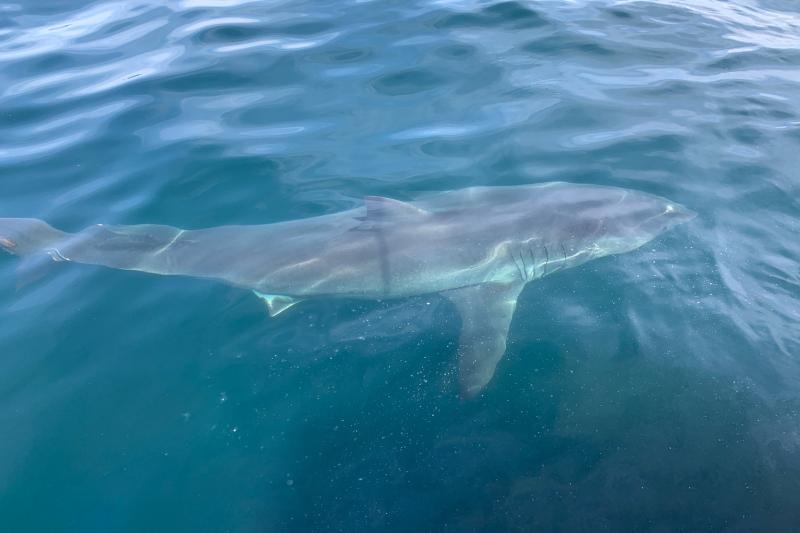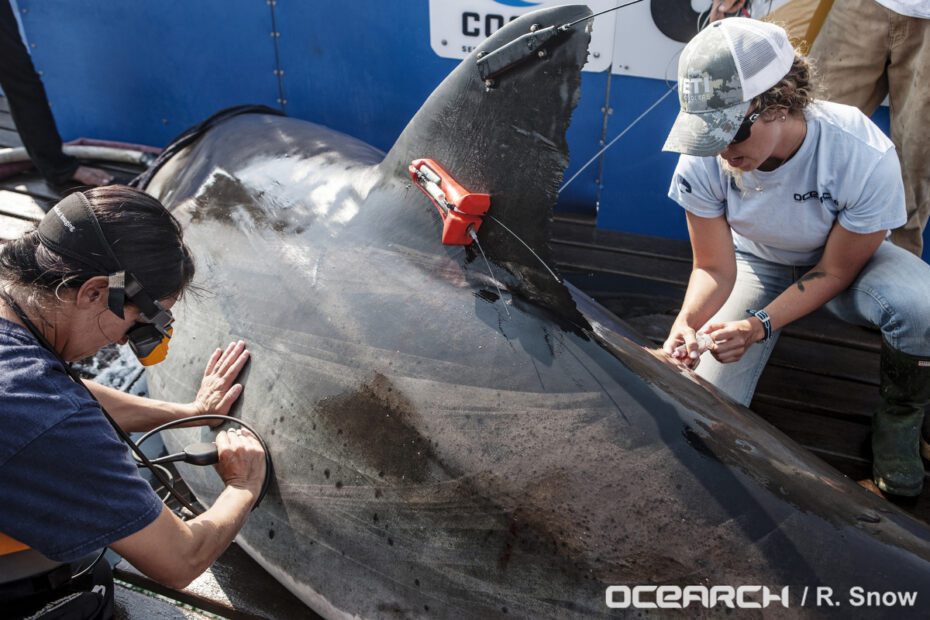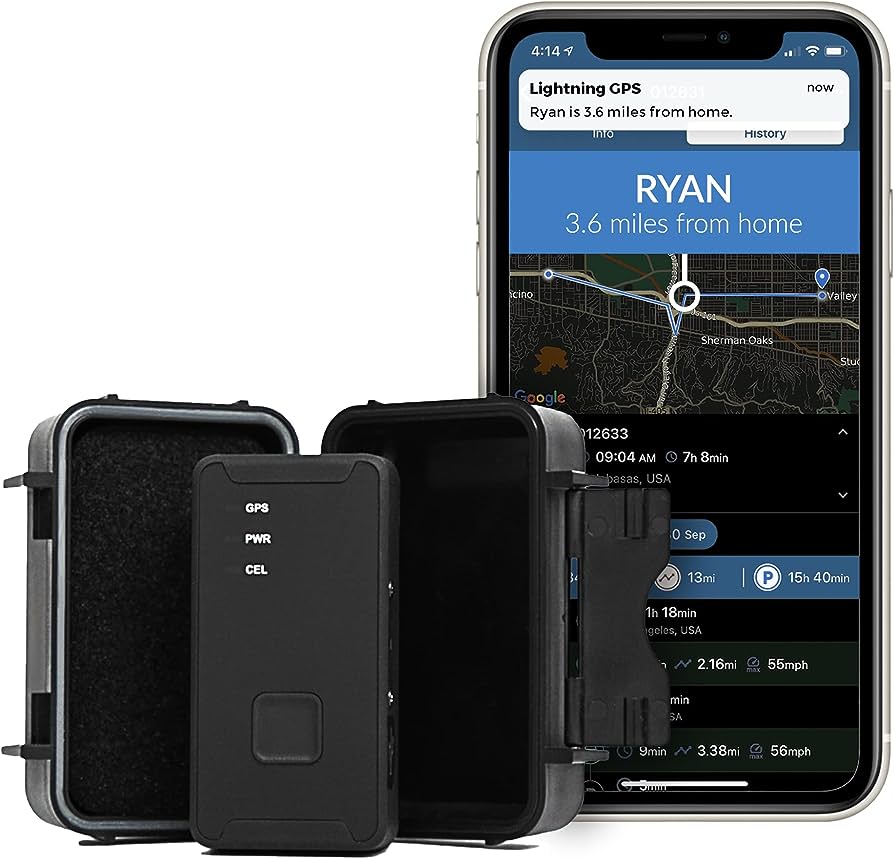To track sharks, use satellite tags and acoustic telemetry, which provide real-time data on their location and movements. These methods offer valuable insights on shark behavior, helping researchers better understand their habitats and migration patterns.
By using satellite tags and acoustic telemetry, scientists can effectively track sharks in the ocean.
Understanding Shark Tracking Technologies
Discover the latest advancements in shark tracking technologies and learn how to effectively track these majestic creatures in their natural habitats. Gain valuable insights into their behavior and movement patterns using innovative tools and methods.
How To Track Sharks:
Sharks have always been intriguing creatures. Tracking their movements and behavior is essential for research and conservation purposes. In order to gain valuable insights into the lives of these majestic predators, scientists rely on advanced tracking technologies. Below, we explore two commonly used methods: GPS Tags and Satellite Tracking, as well as Acoustic Tracking Systems.
We will also delve into the importance of Data Storage and Transmission when it comes to shark tracking.
Gps Tags And Satellite Tracking:
- GPS Tags:
- These small devices are attached to the shark’s dorsal fin and provide information on location, depth, and temperature.
- They use the Global Positioning System (GPS) to accurately record the shark’s movements.
- GPS tags enable scientists to monitor the shark’s migratory patterns, feeding grounds, and breeding areas.
- Satellite Tracking:
- Satellite tracking involves using tags that transmit data to satellites orbiting the Earth.
- By using satellites, scientists can track sharks in real-time, even when they are far from shore.
- This method allows researchers to gather information on long-distance migrations, oceanic habitats, and the impact of environmental factors on shark behavior.
Acoustic Tracking Systems:
- Acoustic Tags:
- Acoustic tags are used to track sharks in a more localized setting, such as coastal areas or specific research sites.
- These tags communicate with a network of acoustic receivers that are strategically placed underwater.
- When a tagged shark comes within range of a receiver, its unique identification number is recorded, providing valuable data on movement patterns and habitat use.
- Acoustic Transmitters:
- Researchers also use acoustic transmitters to track sharks actively.
- By attaching acoustic transmitters to boats or drones, scientists can map out the presence of sharks in a particular area.
- This method allows for real-time tracking and provides insights into the interactions between sharks and their environment.
Data Storage And Transmission:
- Memory Capacity:
- GPS and acoustic tracking technologies generate vast amounts of data.
- The devices used must have sufficient memory capacity to store this data effectively.
- High-capacity storage ensures that researchers can collect long-term data sets, facilitating accurate analysis and decision-making.
- Data Transmission:
- Transmitting data from the tag to the researchers is crucial for real-time monitoring.
- Satellite tracking systems rely on satellite communication to send data directly to the scientists.
- Acoustic tracking systems use either manually or automatically downloading methods to transfer data from the devices to the researchers’ database.
Understanding shark tracking technologies provides crucial insights into the behavior and conservation of these incredible creatures. By utilizing GPS tags, satellite tracking, acoustic tags, and acoustic transmitters, scientists can gather information on shark movements, habitats, and migratory patterns. Efficient data storage and transmission methods ensure that researchers can analyze and monitor sharks effectively.
Through ongoing tracking efforts, we continue to deepen our understanding of these majestic creatures and work towards their preservation.
Choosing The Right Shark Tracking Method
Track sharks effectively by choosing the right tracking method. Discover the most accurate and efficient ways to monitor and study these fascinating creatures in their natural habitats.
Sharks are fascinating creatures that inhabit our oceans, and tracking their movements can provide valuable insights for research and conservation efforts. When it comes to choosing the right method for tracking sharks, there are several considerations to keep in mind.
In this section, we will explore these considerations as well as the factors to consider in tracking equipment and the importance of researching best practices and case studies.
Considerations For Different Shark Species:
- Habitat preferences: Different shark species have specific habitat preferences, and understanding these preferences is crucial for effective tracking. Some species may prefer shallow coastal waters, while others may inhabit deeper offshore areas.
- Size and behavior: The size and behavior of sharks can also influence the choice of tracking method. Some species are large and highly migratory, while others have more limited ranges. This information helps in determining the appropriate tracking equipment and techniques.
- Tag attachment: The method of attaching tracking tags to sharks can vary depending on the species. Some tags may be attached externally, while others may be implanted internally. It is important to consider the safety and well-being of the shark when choosing the appropriate attachment method.
Factors To Consider In Tracking Equipment:
- Tag type: There are various types of tracking tags available, including acoustic, satellite, and archival tags. Each type has its own advantages and limitations. Acoustic tags, for instance, rely on detection by a network of receivers, while satellite tags transmit data directly to satellites. Careful consideration of the research objectives and the target shark species will help determine the most suitable tag type.
- Battery life: The battery life of tracking tags is an important consideration, especially for long-term studies. Some tags have a shorter battery life, which limits the duration of data collection. It is essential to choose tags with sufficient battery capacity for the intended tracking duration.
- Data transmission: Depending on the tracking method, data from the tags can be transmitted in real-time or stored internally for later retrieval. Real-time transmission allows for immediate access to the data, while internal storage may require physical recapture of the tagged shark. The choice of data transmission method should align with the research goals and logistical feasibility.
Researching Best Practices And Case Studies:
- Staying informed: Before embarking on a shark tracking project, it is essential to research and stay informed about the best practices in the field. This includes understanding the latest technological advancements, data analysis methods, and ethical considerations.
- Learning from case studies: Examining successful case studies can provide valuable insights and guide the selection of tracking methods. By studying similar projects, researchers can learn from the experiences of others, identify potential challenges, and refine their own tracking approach.
Choosing the right shark tracking method requires careful consideration of factors such as habitat preferences, shark size and behavior, tag attachment methods, tag type, battery life, and data transmission options. By researching the best practices and learning from case studies, researchers can enhance their understanding of shark movements and contribute to the conservation of these magnificent creatures.
Implementing A Shark Tracking Program
Learn how to effectively track sharks with the implementation of a shark tracking program. Discover the latest techniques and technologies used in monitoring these fascinating creatures in their natural habitats.
Implementing a shark tracking program requires collaboration with researchers and institutions, identifying suitable study sites, and securing funding and resources. By following these steps, you can establish an effective shark tracking program that will contribute valuable insights into shark behavior and conservation efforts.
Collaborating With Researchers And Institutions
To enhance the credibility and scientific rigor of your shark tracking program, it is essential to collaborate with reputable researchers and institutions. Consider the following:
- Identify potential partners: Reach out to marine biologists, universities, and research organizations specializing in shark tracking. Seek experts in the field who can provide insights, guidance, and support throughout the program.
- Establish partnerships: Foster relationships with researchers and institutions by outlining the program’s goals, objectives, and the benefits of collaboration. Demonstrate the potential for meaningful contributions to the understanding of shark behavior and conservation.
- Collaborative research design: Work closely with researchers to develop a robust research design that aligns with the objectives of your tracking program. This includes determining the tracking methods, data collection protocols, and data analysis techniques to ensure scientifically valid results.
- Exchange of knowledge and resources: Foster an open exchange of knowledge and resources with your collaborators. This includes sharing expertise, data, and access to tracking technologies to maximize the effectiveness and impact of your shark tracking program.
Identifying Suitable Study Sites
Careful selection of study sites plays a crucial role in the success of a shark tracking program. Consider the following factors:
- Biodiversity hotspot: Look for study sites that are known for high shark diversity and abundance. These areas provide a wealth of opportunities to track and observe different shark species, contributing to a comprehensive understanding of their behavior.
- Accessibility: Choose study sites that are easily accessible for researchers and equipped with necessary infrastructure. Proximity to research facilities, marine reserves, and areas with established shark populations facilitate efficient tracking operations.
- Environmental conditions: Consider the environmental conditions of potential study sites. Factors such as water temperature, salinity, currents, and prey availability influence the movements and behavior of sharks. Optimal study sites offer a diverse range of environmental conditions to study different aspects of shark behavior.
- Collaboration with local communities: Engage with local communities and stakeholders in the selection of study sites. Their knowledge of the area, fishing practices, and historical shark sightings can provide valuable insights into potential tracking hotspots.
Securing Funding And Resources
To implement a successful shark tracking program, securing adequate funding and resources is essential. Consider the following strategies:
- Grant applications: Identify relevant grants and funding opportunities in the field of marine research and conservation. Prepare compelling grant applications that clearly outline the objectives, methodology, and potential contributions of the shark tracking program.
- Private sponsorships: Seek partnerships with private sponsors, corporations, or philanthropic organizations interested in supporting marine research and conservation initiatives. Highlight the unique educational and public outreach opportunities associated with shark tracking programs to attract potential sponsors.
- Collaborative funding: Explore joint funding opportunities through collaborations with other research organizations or government agencies. Pooling resources can enhance the financial sustainability of the shark tracking program.
- In-kind contributions: Leverage in-kind contributions such as access to research vessels, tracking equipment, and scientific expertise. Collaborating with partners who can provide resources and support can significantly reduce the financial burden of implementing a shark tracking program.
By following these steps, you can lay the foundation for a robust shark tracking program, fostering collaborations, identifying suitable study sites, and securing the necessary funding and resources. This will enable you to gather valuable data and contribute to the understanding and conservation of these magnificent creatures.
Collecting Data And Analyzing Results
Track and analyze shark data for a better understanding of their behavior and patterns. Gain insights into their movements and habitats to ensure greater protection and conservation efforts.
Sharks are fascinating creatures that have captured the curiosity and interest of people around the world. Tracking their movements and behavior is crucial for researchers to better understand their habitat preferences, migration patterns, and population dynamics. In this section, we will dive into the process of collecting data and analyzing results to gain insights into these elusive marine predators.
Data Collection Protocols And Best Practices:
- Establishing a standardized approach: To ensure consistency in data collection, researchers follow specific protocols that encompass various aspects of the study, including methodology, equipment used, and sampling techniques.
- Acoustic telemetry: One widely used technique involves tagging sharks with acoustic transmitters. These tags emit unique signals, which are detected by an array of receivers placed strategically in the study area. This method allows researchers to track individual sharks and monitor their movements continuously.
- Satellite tagging: Another valuable tool is satellite tagging, where sharks are fitted with tags that transmit data to satellites whenever the animals surface. This technique provides insights into long-distance movements and oceanic behaviors.
- Photographic identification: Photographs of distinct markings, scars, or fin shapes on sharks can serve as a valuable means of identification. By comparing images over time, researchers can track individual sharks and gain information about their movements and habitat use.
Analyzing Movement Patterns And Behavior:
- GIS software analysis: Geographic Information System (GIS) software is employed to analyze tracking data and create visual representations of shark movements. By overlaying these data onto various environmental factors, such as water temperature and prey abundance, researchers can identify patterns and correlations.
- Home range estimation: Utilizing tracking data, researchers can estimate the size of a shark’s home range, which is the area an individual shark frequents. This information helps reveal habitat preferences and the extent of movement within a specific location.
- Behavior classification: Analyzing patterns in movement data allows researchers to categorize different behaviors, such as foraging, migration, or breeding. By understanding these behaviors, scientists can assess the ecological importance of certain habitats and develop effective conservation strategies.
Identifying Population Dynamics And Migration Routes:
- Population abundance estimation: By combining data from multiple tracking studies, researchers can estimate the population size and density of a particular shark species within a given area. These estimates are crucial for conservation efforts and evaluating the effectiveness of management strategies.
- Connectivity and migration routes: Tracking data helps identify important migration routes and connectivity between different populations of sharks. This information is vital for understanding their overall distribution and can aid in the implementation of protective measures along migration corridors.
- Citizen science initiatives: Engaging the public in data collection through citizen science initiatives has become increasingly popular. With the help of recreational anglers and beachgoers, researchers can gather valuable information on shark sightings and movements, expanding the scope of tracking studies.
Through precise data collection protocols and rigorous analysis of results, scientists can unravel the secrets of shark movements and behavior. This knowledge is instrumental in fostering their conservation and coexistence with human activities in the open oceans. Tracking sharks not only contributes to our understanding of these majestic creatures but also enables us to protect and safeguard their future.
Ensuring Ethical And Sustainable Tracking Practices
Discover ethical and sustainable practices in tracking sharks. Learn how cutting-edge technology helps scientists monitor shark populations and protect these majestic creatures in their natural habitats.
Sharks are fascinating creatures that capture the imagination of many people around the world. Whether you’re a scientist, a conservationist, or simply someone with a deep curiosity about the ocean, tracking sharks is a thrilling endeavor. However, it’s important to ensure that the practices used to track sharks are not only effective but also ethical and sustainable.
In this section, we will explore some guidelines and considerations for tracking sharks responsibly.
Animal Welfare Guidelines And Considerations
When tracking sharks, it is crucial to prioritize the well-being of these magnificent creatures. By adhering to animal welfare guidelines and considering the following points, we can minimize any negative impact on their health and behavior:
- Respect personal space: Sharks, like any other wild animal, have their own comfort zones. It is essential to maintain a safe distance to avoid causing stress or disrupting their natural behavior.
- Minimize handling: Physical contact should be limited as much as possible. Handling sharks can be distressing for them and may even result in injury. Utilize non-invasive tracking methods to gather information without direct interaction.
- Safe tagging procedures: If it becomes necessary to tag a shark for tracking purposes, protocols should be followed to ensure the process is performed safely and with minimal disturbance. Tags should be carefully selected and applied, considering factors such as size, weight, and attachment method.
Minimizing Disturbance And Harm
While tracking sharks, it is essential to minimize any potential disturbance or harm to both the tracked individuals and their ecosystems. By adopting these practices, we can reduce the impact of our activities:
- Non-intrusive monitoring: Implement tracking methods that minimize interference with the shark’s natural behavior. Techniques such as acoustic tagging and satellite telemetry enable researchers to collect valuable data while avoiding direct disruption.
- Avoid sensitive areas: Exercise caution when tracking sharks near areas important for breeding, feeding, or resting. Shifting focus to less sensitive locations can help alleviate potential stress on the sharks and preserve critical habitats.
- Time limitations: Limit the duration and frequency of tracking efforts to avoid prolonged disruption and potential negative effects on feeding, reproduction, or migration patterns. This ensures that sharks can carry out their natural behaviors without undue interference.
Engaging With Conservation Organizations
Collaborating with conservation organizations is vital for promoting ethical and sustainable tracking practices. By teaming up with these groups, we can contribute to the preservation of shark populations and their habitats:
- Support research initiatives: By funding or participating in research projects led by reputable conservation organizations, you can actively contribute to the understanding and conservation of sharks.
- Share data and insights: Collaborate with these organizations to share data collected during tracking efforts. By pooling resources and knowledge, the accuracy and effectiveness of tracking initiatives can be enhanced.
- Advocacy and education: Participate in educational campaigns and advocacy efforts focused on promoting ethical shark tracking. By raising awareness and fostering a sense of appreciation for these creatures, we can inspire others to engage in responsible tracking practices.
By adhering to animal welfare guidelines, minimizing disturbance and harm, and engaging with conservation organizations, we can ensure that shark tracking initiatives remain both ethical and sustainable. Through these efforts, we can contribute to the conservation of these incredible creatures and their habitats and further our understanding of the complex marine ecosystems they inhabit.
Sharing And Communicating Shark Tracking Findings
Discover the fascinating world of shark tracking and learn how to monitor their movements through innovative technology. Stay connected with the latest findings and share them with others to promote awareness and conservation efforts.
Sharks play a vital role in marine ecosystems, and tracking their movements allows scientists to gain valuable insights into their behavior and habitat preferences. Effectively sharing and communicating shark tracking findings is essential for raising awareness and promoting conservation efforts.
Here are some effective ways to present data and research findings, engage with the public and media, and drive initiatives for shark conservation:
Presenting Data And Research Findings
- Visualize tracking data: Transforming complex data into visual representations, such as charts, graphs, and maps, makes it easier for the audience to comprehend and interpret the findings.
- Create informative infographics: Condense key information into visually appealing infographics that provide a quick overview of shark tracking research, highlighting important findings and conservation implications.
- Publish scientific articles: Share detailed research findings in peer-reviewed scientific journals to contribute to the broader scientific community’s understanding and facilitate collaboration among researchers.
- Deliver engaging presentations: Present the tracking findings at conferences, seminars, or workshops. Use compelling visuals, storytelling techniques, and clear language to connect with the audience and convey the significance of the research.
Engaging With The Public And Media
- Organize outreach events: Collaborate with local communities, schools, and conservation organizations to organize events that showcase shark tracking research. Offer interactive displays, educational talks, and hands-on activities to engage the public and raise awareness.
- Harness the power of social media: Utilize various social media platforms to share shark tracking updates, highlight interesting findings, and engage with a wider audience. Encourage discussions, answer questions, and provide accessible information.
- Collaborate with journalists: Build relationships with journalists and media outlets to promote shark tracking research. Provide press releases, media packs, and interviews to communicate the importance of the research and raise public interest.
- Participate in outreach programs: Engage with local communities through outreach programs, such as school visits, public lectures, or community events. Foster a sense of connection, provide educational material, and promote conservation actions.
Promoting Awareness And Conservation Initiatives
- Collaborate with conservation organizations: Partner with reputable conservation organizations to amplify the impact of shark tracking research. Work together to implement conservation initiatives, raise funds, and advocate for policy changes that protect sharks and their habitats.
- Develop educational materials: Create informative brochures, fact sheets, or online resources that provide accessible information about shark tracking research, their ecological importance, and conservation efforts. Distribute these materials widely to inspire action.
- Engage with policymakers: Communicate the research findings to policymakers and advocate for the development and enforcement of shark conservation measures. Provide evidence-based recommendations and support legislation aimed at protecting sharks and their habitats.
- Encourage citizen science involvement: Promote citizen science initiatives that allow the public to contribute to shark tracking research. Encouraging people to report shark sightings or participate in data collection programs empowers individuals to actively engage in conservation efforts.
By effectively presenting data and research findings, engaging with the public and media, and promoting awareness and conservation initiatives, we can work towards ensuring the well-being of sharks and their ecosystems. Together, we can make a difference in protecting these majestic creatures for future generations.

Credit: www.boothbayregister.com
Frequently Asked Questions For How To Track Sharks
How Do You Track Sharks?
To track sharks, scientists use satellite tags and acoustic tags fitted to the sharks’ bodies. These tags transmit data on the shark’s location and behavior.
What Are Tracking Devices For Sharks?
Shark tracking devices are used to monitor the movements and behavior of sharks in the ocean.
Does Google Maps Show Sharks?
Google Maps does not show sharks.
What Is The App That Shows You Where Sharks Are?
The app that shows you where sharks are is called Shark Tracker.
Conclusion
Tracking sharks may seem like a daunting task, but with the advancements in technology and the commitment of researchers and conservationists, it is becoming more accessible and efficient. By using satellite tags, acoustic tags, and photo identification, scientists are able to gather valuable data on shark movements, behavior, and population dynamics.
This information is crucial in understanding shark ecology, facilitating conservation efforts, and mitigating human-shark interactions. Additionally, emerging technologies such as drones and underwater drones are providing new perspectives and opportunities for shark tracking. It is exciting to see how these innovations are revolutionizing the field of shark tracking and contributing to our understanding of these incredible creatures.
With continued research and collaboration between scientists, policymakers, and the public, we can work towards a future where humans and sharks coexist harmoniously. So let’s dive in and explore the fascinating world of shark tracking!
- What Is the 11 Hour Limit: A Comprehensive Guide - June 7, 2024
- What Happens if You Drive on a Suspended License in Virginia - June 7, 2024
- Wilcox Justice Court Overview: Online Services & Legal Proceedings - June 6, 2024




